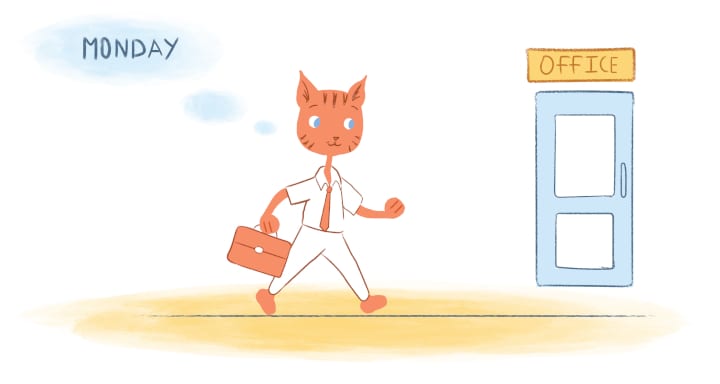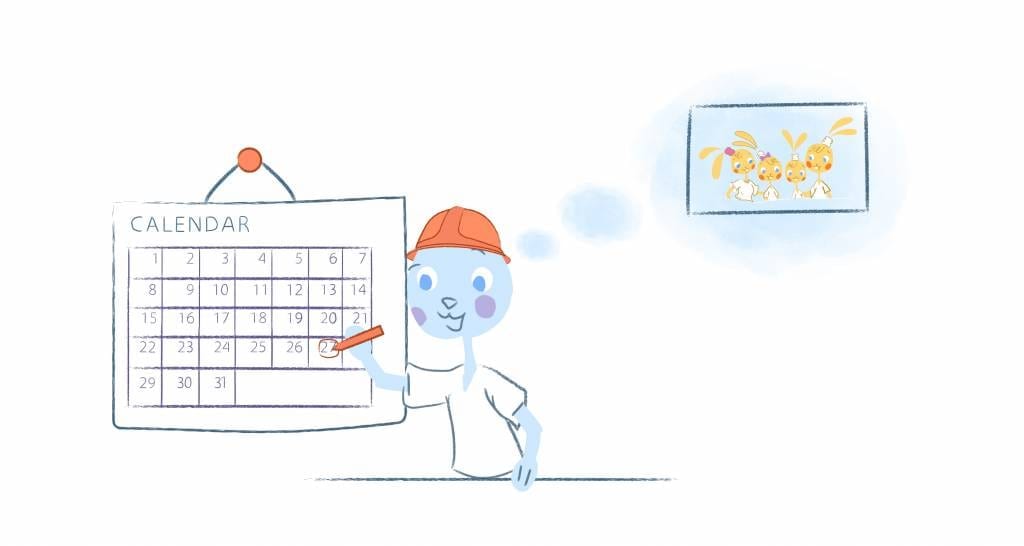

Catering to multiple clients at once is the dream of every freelancer. You get to be your own boss, work on projects you actually like, and work anytime and anywhere you want. But the question is, how can you effectively juggle three, four, or five clients at once while still maintaining productivity and quality of work?
In this Freelancing 101 guide, we give you tried and tested tips on successfully juggling multiple clients at once.
1. Organize and Track Everything
To-do lists are great, and they work! But there may come a time when a single to-do list doesn’t cut it anymore, especially when you’re working with several clients. You’ll be less likely to keep track of different requests, details, and deadlines.
Project management apps like Trello, Asana, and Notion are great tools for organizing multiple projects. These tools are free, board-based, and list-based. Some even have a calendar view and a Kanban board, making it great for both visual and writing learners.
These apps are great for organizing your next steps and breaking down projects into bite-sized tasks. Combine these apps with time tracking, and you’ll better understand exactly how long it takes to do a particular job or a group of functions.
Estimating your time also allows you to schedule your projects in a way that works in your favor. As a result, your estimates for potential clients will be more accurate, and you’ll be able to confidently book more clients in the future. It can be challenging upfront, but you’ll get better as you continue gathering more data.
2. Block Your Schedule
Once you understand how long specific tasks and projects take, it will be easier to schedule your hours for the week. Here are some tips on how you can do it:
- Designate one day for admin tasks. Create a to-do list for all your admin tasks and designate one day a week to send invoices, touch base with clients, delegate tasks to other team members, check the output, etc. Your to-do list will keep your clients in the loop, your bills paid, and keep your mind focused on more creative tasks.
- Schedule specific days for specific tasks. Some people prefer to do admin tasks earlier in the week and save the creative tasks for the weekends. These different job days will depend on your preferences and how you work.
- Leave a 30-minute (at most) break between major work blocks. Set aside time to respond to Slack messages, emails or take a quick break. If something takes less than five minutes, you might as well do it now.
- Re-evaluate your schedule. You may need to re-evaluate your scheduling process as you learn more about what works for you.
- Make time for yourself. Be sure to schedule time for yourself for chores, hobbies, and self-care. No matter how busy your day is, making time for yourself is essential.
3. Prioritize Important Tasks from Clients
When you’re managing multiple clients at once, it’s a good idea to divide your tasks based on their deadlines and how important they are. Then, once you have a list of Everything you need to do, plan how to schedule them throughout the week.
Keep in mind that some clients may require more communication as you’re working on the project, while others focus on the results. You can use the prioritization matrix to determine which tasks are more critical than others. It’s a business analysis tool that allows you to compare choices and ultimately decide which projects are more urgent, which ones bring in more value, and which ones have the best chances of success.
4. Make Sure Your Schedule is Realistic
It can be tempting to stuff all your tasks in a week. However, setting unrealistic deadlines may result in stress and burnout. It will also mess up the rest of your schedule, and you’ll spend the following days or weeks playing catch up with piled-up tasks due to delays.
One way to make sure that your schedule is realistic is to use the SMART technique. First, make sure that each of your goals is Specific, Measurable, Attainable, Relevant, and Time-bound. Then, evaluate the schedule you’ve set for the week, determine the steps you need to take to achieve those goals, and set a deadline.
5. Set Aside Time to Collaborate and Communicate with Clients
Slack messages, phone calls, email, and video calls are one of the many different ways your clients can reach you. However, you need to set clear boundaries on when you’re going to take calls and reply to messages.
You don’t need to respond to them right away, but be sure to inform your clients when you or your team are available for emails, chats, or calls. Setting up communication hours ahead of time will help you save a lot of time and headaches. It’s best to allow communication to times in the day when your productivity levels are low, like after lunch or before the workday ends.
Keep track of your meetings, client information, and priority tasks using a time management calendar. Online calendars and scheduling apps let your clients and team know of your availability and when they can reach you.
If your client still calls you, use the do not disturb feature on your phone to avoid getting distracted. However, do not ignore essential calls. Setting these boundaries draws a line between important calls and quick check-ins.
6. Set Reminders for Priority Tasks
Set reminders before meeting with your clients to go over important tasks and concerns. Using Google Calendars or Microsoft Teams helps you consolidate your notes and set reminders before each client section. You can also record meetings, making it easier to manage multiple clients and review essential conversations so you won’t miss anything. Setting reminders for priority tasks ensures that you’re on time for all your deliverables.
7. Do One Task at a Time
It can be tempting to multitask, especially when due dates for multiple clients are fast approaching. However, multitasking can negatively affect your performance and output. It divides your attention, making it harder to give your 100% on one task.
Each client also has different briefs, requiring a different mindset when working on each project. For example, when you try to do a little bit of Everything, you may end up doing Everything, but the quality is compromised, or you won’t finish anything at all.
Work one task at a time and do your best. Then, once you’re done with those specific tasks — move on to another job. You can write blogs, work on infographics, edit content, or even watch Netflix simultaneously. That’s why it’s crucial to time block and set clear boundaries for different work and personal life aspects.
8. Take a Break!
You deserve a break from all the hard work you’re doing! Taking breaks during the workday recharges your batteries and improving your quality of work. Get a cup of coffee in the afternoon or take a walk. If you work from home, you can even take a nap.
You can also adopt different productivity techniques like Pomodoro. The Pomodoro Technique is a time management method where you work in short productivity bursts and take a few breaks in between. For example, you set a timer to work for 90 minutes straight and take a 20-minute break afterward. There are several types of productivity techniques, so you can find one that works for you!
Be sure to take a vacation leave. A three- to five-day vacation can help avoid burnout and maintain a healthy work-life balance.
9. Know When to Say No
When you’re dealing with a handful of clients at once, it’s easy to end up with too much on your plate. As a result, many freelancers find themselves working 12 hours a day trying to tick off all the items on their seemingly never-ending to-do list. However, working like this for weeks on end can lead to burnout.
Assess yourself and make sure you’re aware of your bandwidth, so you won’t feel overwhelmed, start missing deadlines, and compromising the quality you put into your work.
Ask yourself the following questions before you accept any more clients or projects:
- How many working hours can I spend within a day without feeling overwhelmed?
- Within those number of hours, how many am I willing to spend in building my freelance business, like basic admin tasks, pitching projects, developing systems, etc.?
- With these in mind, how many hours can I realistically devote to clients each workweek?
Knowing your capacity and how much you can take, you’ll be able to make realistic decisions when accepting projects. If you think you’re approaching max workload capacity, don’t hesitate to increase your rates or decline the offer.
As hard as it might be to turn down a project, it’s a necessary part of growing your freelance business. Clearly explain to potential clients why you’re fully booked and tell them that you’d love to secure them in your calendar for the next month or two.
What’s Next?
Juggling multiple clients at once can be challenging, especially if your freelance business has just started to grow. But with some planning, organizing, and setting SMART goals, you can keep adding more and more projects to your portfolio.
The primary key to successfully managing several clients is strong time management skills, including setting boundaries with clients, prioritizing tasks, planning, and reviewing your schedule. As you work hard for your dreams, don’t feel guilty about taking time off for yourself. Instead, enjoy, relax, and recharge for another week of creating, meeting, and delivering.
Image Credit: shvets; pexels; thank you!











Dane Panes
Dane Panes has been working as a content writer since 2017. She now works full-time for SMB Compass and has covered topics relating to entrepreneurship, business financing, marketing, and more. When she’s not working, you’ll most likely see her hunched in one corner reading a good book or binge-watching her favorite TV series.